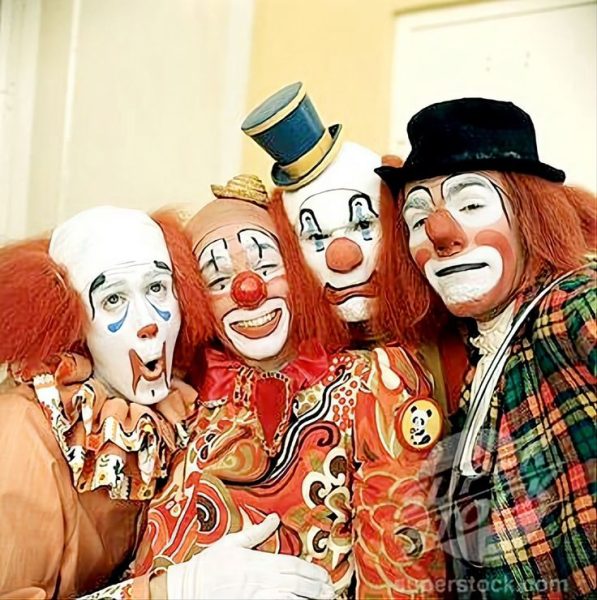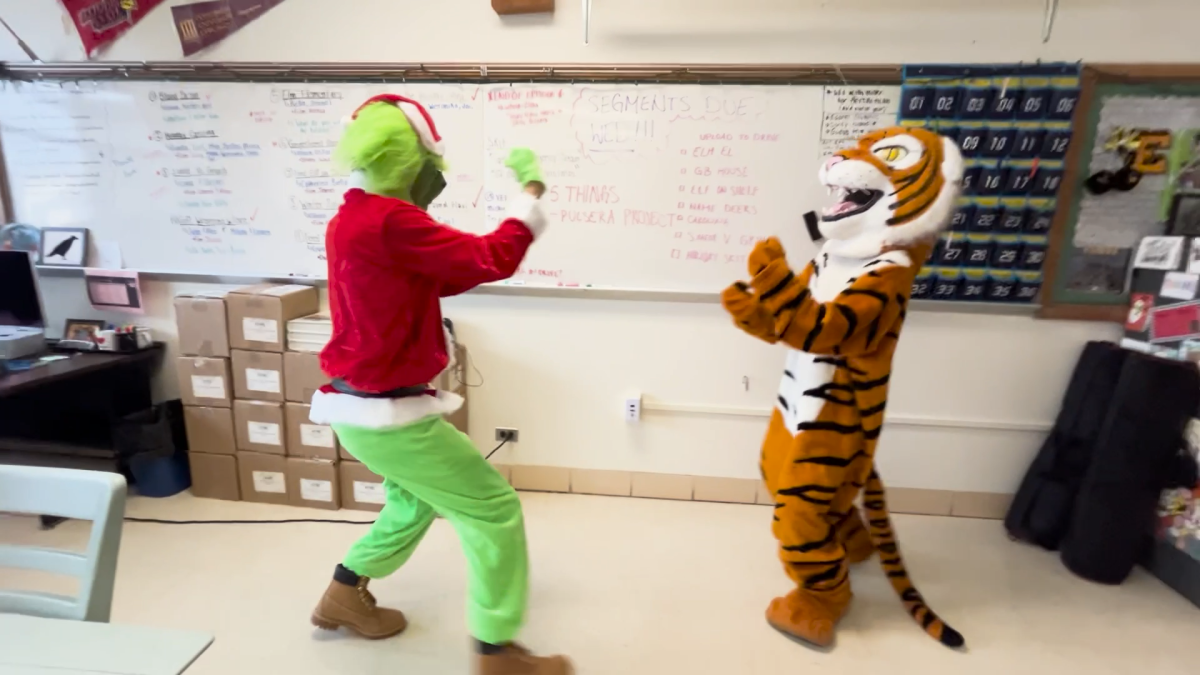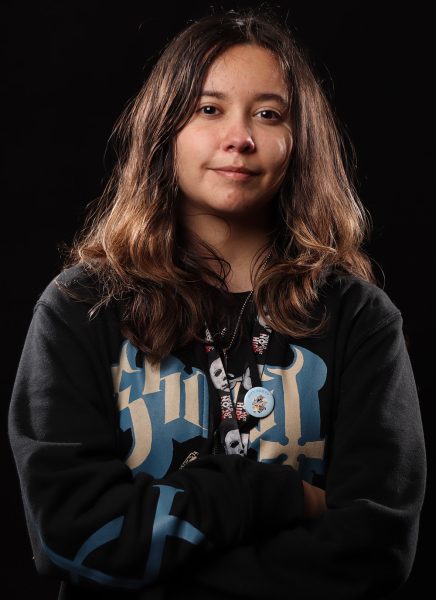Interested in Clowns?
Are you afraid of clowns? Find them boring, or think they’re just for horror movies or for kids? Well, in this article I will show you different kinds of clowns and explain how they came to be! Clowns are, for the most part, people who have always wanted to spread joy and laughter through their jokes and acts. Clowns are very historical and important to some cultures. There are many kinds of clowns that people may not know about! If you’re interested in learning about a handful of different types of clowns, this article is for you.

How did clowns come to be?
When people try to think or guess the origins of clowns, most would surely guess that clowns originate from court jesters that are seen in medieval fantasy movies and documentaries. But the actual origin of clowns dates further back than most may think. One of the earliest accounts of clowns is from ancient Greece during 700-480 B.C. They had a bald head, wore padding in their outfits and colorful colors. They are more similar to modern-day mimes. These clowns would parody serious actions and skits; they did this to spread laughter throughout the people. They would even throw peanuts at the audience! This same type of clown was later seen in the Roman mime, except they wore pointed hats and patchy clothing. Entertainment was very prominent in ancient Greece and Rome. Battles in arenas, execution, etc. This “clowning around” was an innocent form of entertainment; an act that could be enjoyed by all. But the first true circus clown was Joseph Grimaldi. He began performing in 1805. There were circuses that began traveling and that is how our beloved circus clowns came to be.
It is said that clowns may even date back to the 2500’s B.C.E in Egypt and China. If that is true, then clowns date back even further! Clowns have become a part of the culture in some countries. They were even employed by royal families in Egypt, Greece, China, and Rome. This profession remained throughout the Middle Ages, which is when the beloved jesters were documented.
Circus clowns VS. Auguste clown: The first?

Everyone has heard of a circus at least once, right? Tight rope walkers, acrobats, fire eaters, and many more impressive and unique performances. With all these new modern stunts, the circus clown has become overlooked and forgotten. Just another silly old clown that only performs to spark laughter in the children within the crowd. The first circus clown is responsible for the modern clowns we often see today. Without circus clowns, there would likely have been very few clowns left today due to the lack of Royals or government authorities with a sense of humor willing to hire them. Although these circus clowns are not the first clowns in history, they have paved the way for our modern-day clowns. This profession is very much alive today! Without circus clowns, horror movie fans would not have the scary clown genre.
Party clowns are similar to circus clowns, though they travel a lot less and are usually a solo act. Party clowns are the second most prominent clowns seen today at kids birthday parties, weddings, conventions, etc. When you look up the word “clown” in a Google search, these brightly colored clowns will be the first to pop up. Party clowns are known for their rainbow afro, large red noses, and big red shoes. They use silly props, perform goofy skits, and harmless pranks, and are always clumsy. Ever seen a clown ask someone to smell a flower, just for the flower to shoot water in their face? Chances are, that was a party clown. They are great entertainers for the whole family.

Innocent turned sinister: Scary clowns.
Yes, it’s that time for the well-known and partially beloved, scary clowns. Associated with horror movies, haunted houses, urban legends, and the killer clown occurances back in 2016 that everyone seems to have forgetten about. Creepy clowns are certainly scary, but why? How did a joyous, colorful, and childish profession become so sinister. Instead of sparking joy in people— spark fear?
Coulrophobia: The fear of clowns.
Believe it or not, the fear of clowns did not start when people started to make them look eerie and sinister. This fear dates further back to when clowns were still innocent performers. Some reasons why people are afraid of clowns are the uncertainty of danger and unpredictability of behavior. Clowns act very spontaneously, some are mute while some are very loud. Although there is a human under those colorful clothes and makeup, people tend to forget that when it comes to performers. A clown’s behavior can be a bit sporadic, which can be believed to be negative. Some may think clowns appear to be too innocent, that everything they do is an act. This can make some people feel uneasy about these performers. And sometimes, the cause of fear is as simple as people think someone having their face painted and acting like a child can be scary.
Sinister clowns can be traced back to 1940 with the DC comic book character the Joker and Stephen King’s Pennywise. This paved the way for many more horror movies using clowns as their killers or source of horror and shock. Nobody would expect an innocent, playful clown to be so scary!

Jesters: Are they clowns?
Jesters are a bit different from average clowns, though most people would categorize them under a sub-genre of an ordinary clown. Jesters were a bit darker with their humor than the regular buffoonish clown, and usually only performed for Royals during the medieval and Renaissance era. Usually recognized for their unique and exaggerated headgear and curled jingly shoes, Jesters are portrayed in many medieval fantasy or historical movies. They juggled, performed entertaining acts, and sometimes they even served as social commentators. They’d use their wits and jokes to mock and criticize authority figures! Jesters would make jokes about societal norms and highlight problems in politics and culture. The role as a confidant to rulers gave them the freedom to speak out and share opinions that usually would have not been tolerated at that time.
Jesters were much more versatile than an ordinary clown. They were skilled in many areas. Most jesters could play an instrument, sing, dance, perform theatrical plays, and have good storytelling skills. This wide range of skills was not technically required for jesters, but it was expected of them to entertain and to entertain well. The only protection they had against the authorities they offended with their satire was the rulers whom they entertained for.

Payasos: A cultural clown
Payasos originate from Mexican and other Hispanic cultures, payaso translates to “clown” in English. And although they are very similar to the American party clown, payasos are a cultural symbol in a majority of Hispanic cultures, such as Mexico. Some are hired for Quinceañeras, celebrations, festivals, parties, and more. They are treasured and many iconic payasos are still loved today in these countries, as well as America. Cepillín is a great example. He is extremely well-known and well-loved even after his passing. Cepillín son makes sure to keep his memory alive by continuing to do the face paint style on himself and making videos on TikTok. In Mexico specifically, payasos can also be seen as charitable. Many use their entertainment at hospitals and orphanages and use the profits they make to donate to those places in need.
Payasos dress in colorful costumes, much like American party clowns. They do skits and playful acts to spread joy and laughter to everyone. They use exaggerated expressions and movements and are always the life of a party! Although they are similar to party clowns here in America, they’ve evolved to make clowning in Mexico and other Hispanic countries uniquely their own. Whether it be different costumes or different face paint, Payasos are yet another amazing category of clowns that you should consider checking out.

The Pierrot clown
Pierrot clowns originate from the Commedia Dell’arte tradition of Italian theater. They get the name from the character Pierrot, a love-struck and tragic clown. Unlike most other clowns that are listed so far, Pierrot clowns do not hold a wide smile or exaggerated joyous expressions— instead, their demeanor is quite melancholic. Known for their white face, baggy fitted clothes, and monochromatic color palettes, Pierrot clowns perform acts and stories that can express love, longing, and loss through subtle gestures. Pierrot clowns are the opposite of what you think about for a clown, right?
Pierrot clowns may not be your “ordinary” clown, but they have certainly left their mark on other art forms, such as: music, literature, and the visual arts. Picasso has depicted Pierrot clowns in some of his paintings. These clowns evoke many raw emotions that artists still use as inspiration to this day! These clowns have left a huge mark in the art of clowning, their graceful and emotional performances still hypnotize and captivate many people. They’ve been immortalized by artists and will continue to be throughout the years.
Pierrot clowns have a bit of history with the Harlequin clowns. If you’re interested in their history, check out the next clown below!

Harlequin and Pierrot story.
The Commedia Dell’arte was a popular form of Italian theater. In it, there were three main characters, Pierrot, Harlequin, and Columbina. The harlequin clown is opposite of the pierrot clown. They are usually in colorful, diamond-patterned bodysuits, with pointy hats with a bell attached at the end. Known for their agility and acrobatic skills. Most are performers in circuses. In The Commedia Dell’arte, the harlequin clown had a thin physique and was a cunning man. How exactly are these two clowns connected, you ask? Well, Pierrot is a lovesick clown, his wife being Columbina. But Columbina is Harlequin’s mistress and once figuring this out, Pierrot is heartbroken yet continues to pine after his wife Columbina. This is what gives the pierrot clowns their iconic melancholic expression and performances. Pierrot is stuck in a marriage of unrequited love. Although the pierrot clown gained its iconic expression because of this piece of theater, the harlequin clown did not keep much of this character. Harlequins are easily recognizable due to this story, but other than that, they are usually just skilled acrobats in circuses or other performances! They’re known best for their agility and exciting whimsy performances.
Mime
Mimes have quite a reputation, known for their unique style of expression, using only exaggerated expressions and gestures for their performances instead of speaking. They rely on body language, not using any words to entertain. Mimes date back to ancient Greece and Rome theater traditions, similar to regular clowns. Mimes do look similar to clowns, with their white-painted faces and their comedic acts. similar to the jester, some say that mime is an art form of its own, completely different from clowning.

Being a mime requires more skill than you may think. They need to convey emotion, narratives, ideas, and settings all with just body language and expression alone. While doing all that, they need to make sure the story they’re trying to tell is understood as well as interesting to their audience. This requires skill, precision and a very creative mind. Their body is the canvas to the entire act!
These performances can incorporate comedy, drama, action, and storytelling. Mimes have a universal appeal: they do not speak, therefore their acts can be interpreted and enjoyed by anybody and everybody. This can close the barrier between cultures and language, mimes can be enjoyed by all audiences all at once!
Fin.
Of course, there are many more kinds of clowns out in the world. This is only a handful.

The art of clowning may sound silly to some people…but it is still a profession to some. Whether it be an actor playing a scary clown in an up-and-coming horror film, a haunted house, or somebody who enjoys spreading joy by entertaining party guest in their clown persona, the art of clowning runs deep in many cultures and is extremely misunderstood by some. Hopefully, this article might show you how cool clowns really can be.
Work Cited:
Britannica, T. Editors of Encyclopaedia (2024, March 9). clown. Encyclopedia Britannica. https://www.britannica.com/art/clown
Britannica, T. Editors of Encyclopaedia (2003, August 7). mime and pantomime summary. Encyclopedia Britannica. https://www.britannica.com/summary/mime-and-pantomime
Cezanne, P. (n.d.). Pierrot and Harlequin, 1888 – by Paul Cezanne. Www.paulcezanne.org. https://www.paulcezanne.org/pierrot-and-harlequin.jsp
Ciccarello, R. (2021). Pierrot, The Lovesick Clown | Museum of the American Arts & Crafts Movement. Museumaacm.org. https://www.museumaacm.org/newsletters/newsletter03032021.html#:~:text=During%20Deburau%27s%20performances%2C%20Pierrot%20was
Durango, C. H. | E. S. de. (2021, March 8). ¿Quién fue Cepillín? Aquí la historia del famoso payasito de la tele. El Sol de México | Noticias, Deportes, Gossip, Columnas. https://www.elsoldemexico.com.mx/gossip/celebridades/quien-fue-cepillin-ricardo-gonzalez-gutierrez-historia-famoso-payasito-television-6451122.html
Staff, L. (2019, January 17). Research Guides: Clowns: THEA 118 Stage Makeup: Clowns, the History Of. Pointpark.libguides.com. https://pointpark.libguides.com/c.php?g=1213847&p=8882410#:~:text=Clowns%20date%20to%20at%20least
Steiner, M. (2022, October 25). The creepy clown originated in the crass and bawdy circus clowns of the 19th century. University of South Carolina. https://sc.edu/uofsc/posts/2022/10/conversation_clowns.php
The Curious And Precarious Life Of A Medieval Jester. (n.d.). Ancient Origins Members Site. Retrieved March 22, 2024, from https://members.ancient-origins.net/jester
Tyson, P. J., Davies, S. K., Scorey, S., & Greville, W. J. (2023). Fear of clowns: An investigation into the aetiology of coulrophobia. Frontiers in Psychology, 14. https://doi.org/10.3389/fpsyg.2023.1109466




















